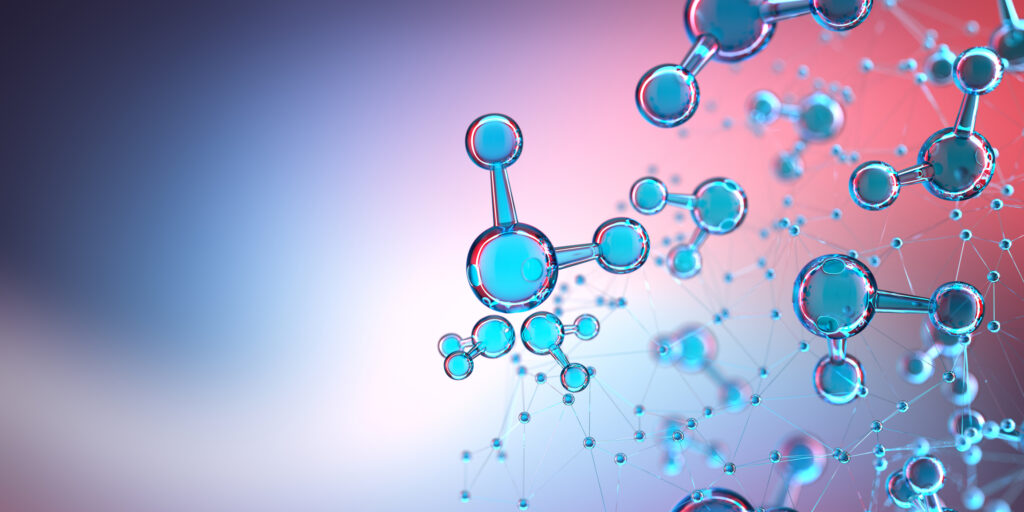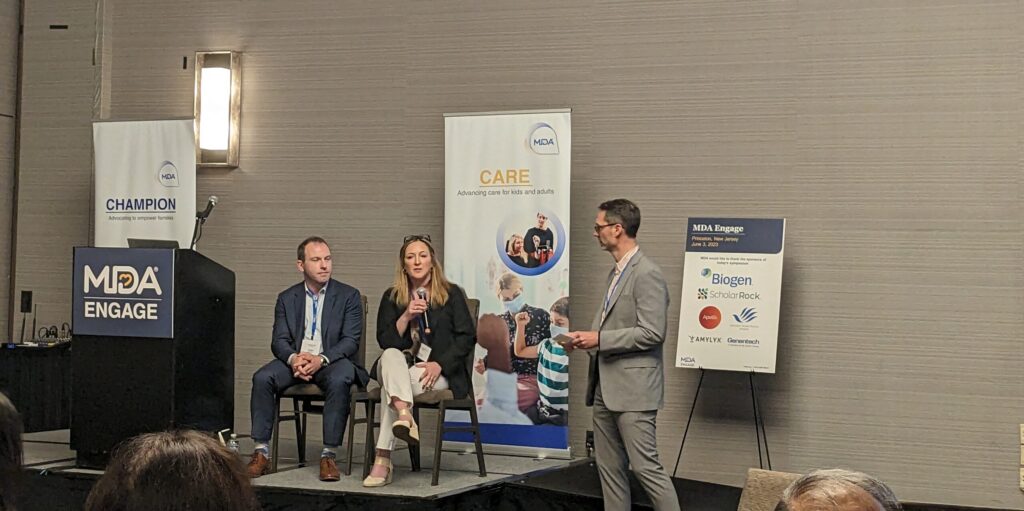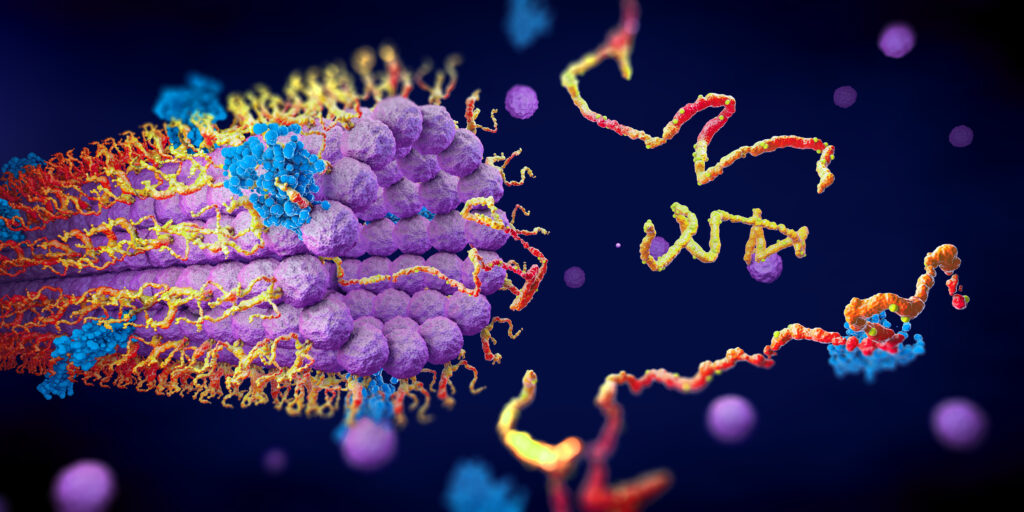
Simply Stated: Research Updates in Pompe Disease
By Sujatha Gurunathan | Wednesday, March 29, 2023
5 Second Summary
“Simply Stated” is a Quest column designed to explain some terms and basic facts about neuromuscular diseases.
Find more at Mdaquest.org/tag/simply-stated
Pompe disease (also called acid maltase deficiency) is a rare, metabolic muscle disorder that causes slow, progressive muscle weakness, especially of the respiratory (breathing) muscles and those of the hips, upper legs, shoulders and upper arms. Though two main subtypes of Pompe disease have been described, infantile and late onset, Pompe is sometimes thought of as disease continuum, with disease presentation varying greatly between different people with the disease. It is estimated that Pompe disease occurs in about 1 in every 22,000 live births in the United States.
Symptoms of Pompe disease
People with Pompe disease may experience some of the following characteristic features:
- poor muscle tone
- generalized muscle weakness
- thickening of the heart muscle (hypertrophic cardiomyopathy (HCM))
- enlarged liver due to heart failure
- failure to gain weight and grow at the expected rate
- respiratory distress
- feeding difficulties
- hearing loss
While disease presentation can differ in the age of onset, organ involvement, severity, and rate of progression, the main subtypes of Pompe disease have been described as follows:
| Subtype | Onset | Disease progression |
| Infantile-onset Pompe disease (IOPD)
Classic IOPD Non-classic IOPD |
Symptom onset before 12 months of life | Classic IOPD:
Presents in the first days of life Most severe presentation If untreated, leads to death from HCM in the first year Non-classic IOPD: Presents with cardiomyopathy (heart disease) in the first year of life Disease progression is less rapid than classic IOPD Muscle weakness typically leads to serious respiratory distress If untreated, most affected children live only into early childhood |
| Late-onset (juvenile and adult) Pompe disease (LOPD) | Symptom onset: Before 12 months of life without cardiomyopathy |
Usually milder than IOPD
|
| Symptom onset: After 12 months of life | Less likely to involve the heart than IOPD | |
| Symptom onset: As late as the 6th decade of life | As LOPD progresses, respiratory failure may result in death |
Cause of Pompe disease
Pompe disease is a genetic disorder caused by mutations in the GAA gene, which encodes an enzyme called acid alpha-glucosidase (GAA). To date, more than 500 variants in the GAA gene have been reported to cause Pompe disease. People with the most severe forms of Pompe disease have disease-causing variants in both copies of the GAA gene, preventing formation or function of the GAA enzyme.
Lack of the GAA enzyme in people with Pompe disease causes accumulation of a complex sugar, called glycogen, in the body’s cells, specifically in cell structures known as lysosomes. The glycogen accumulation leads to swelling and rupture of the lysosomes, which disrupts important cell processes and causes damage to the surrounding tissues. Since the GAA enzyme is normally found in all tissues, this process can result in cell damage in multiple organs. Impaired function of the heart, respiratory, and skeletal (required for movement) muscles, in particular, are thought to contribute to Pompe disease.
For more information about the signs and symptoms of Pompe disease, as well an explanation of the causes of disease, an in-depth overview can be found here.
Diagnosis of Pompe disease
Pompe disease can be difficult to diagnose; the symptoms can be variable and may be mistaken for other neuromuscular conditions. A Pompe diagnosis is typically based on a combination of clinical symptoms and laboratory/genetic testing. The U.S. Department of Health and Human Services added Pompe disease to its Recommended Uniform Screening Panel (RUSP) in 2015, making it the first neuromuscular disease recommended for newborn screening (NBS). As of March 2023, 38 states include a screen for Pompe in their NBS programs.
Current management of Pompe disease
While there is currently no known cure for Pompe disease, enzyme replacement therapy (ERT) is an approved treatment that can improve muscle strength, respiratory function, and overall health of people living with Pompe disease. ERT works by introducing a version of the missing GAA enzyme into the bloodstream to help break down the glycogen that builds up in the body of people with Pompe. The ERT therapy alglucosidase alfa was first approved by the US Food and Drug Administration (FDA) in 2006 for treatment of IOPD and marketed under the brand name Myozyme. After additional approvals, it is also marketed as Lumizyme to treat affected people of all ages. Another formulation of ERT (avalglucosidare alfa-ngpt), known as brand name Nexviazyme, was approved in 2021 to treat individuals that are one-year-old and older with LOPD.
ERT is administered through intravenous (in the vein) infusion, usually every other week. Some people beginning ERT may experience infusion reactions (i.e., develop antibodies to the introduced enzyme), and require treatment to reduce this potentially serious reaction. Over time, some people may require higher doses of ERT to see a benefit or may stop responding to the therapy altogether. While ERT has been shown to increase patient life expectancy and survival without breathing (ventilator) assistance, it is not curative.
Additional supportive strategies can help manage the symptoms experienced by people with Pompe disease. Recommended treatments for disease symptoms include:
- An individualized plan for care of cardiomyopathy
- Physical therapy for muscle weakness to maintain range of motion and improve ambulation
- Surgery for contractures (muscle shortening/tightening), as needed
- Nutrition/feeding support
- Respiratory support, including use of mechanical ventilation, cough assistance devices, and other respiratory aids, as needed
Care recommendations to guide physicians in evidence-based diagnosis and treatment of people living with Pompe have been published by workings groups from the American College of Medical Genetics and the American Association of Neuromuscular & Electrodiagnostic Medicine.
Evolving research and treatment landscape
Current treatments for Pompe disease are life-saving, especially in the case of IOPD. For LOPD, current treatments lessen the rate of decline in people with the disease, and in some instances, lead to functional improvements. Yet, there are still unmet needs for people with Pompe.
Improving ERT
Several groups are working to improve the efficacy of ERT. Using current ERT strategies, only 1% of the introduced enzyme makes it into the target organ (muscle or cardiac muscle). Therefore, better targeting and enzyme stabilization are goals for new ERT approaches. In a phase 3 clinical trial, Amicus Therapeutics is studying the safety and efficacy of an advanced ERT (ABT200/cipaglucosidase alfa), co-delivered with a stabilizing chaperone protein (AT2221/miglustat), in people with LOPD. The FDA was scheduled to make a decision about approval of this ERT candidate by Oct. 29, 2022, but the decision was delayed for various reasons, including COVID-related travel restrictions that prevented inspection of a Chinese manufacturing site.
Gene therapy
Researchers are also investigating gene therapy to correct the underlying enzyme defect in Pompe disease. This strategy would require a single, or very few, treatment(s) to achieve long-term benefit. It could also help overcome challenges faced with ERT, such as declining effectiveness, and address logistical difficulties that patients face in adhering to weekly appointments.
Two groups, Spark Therapeutics and AskBio, are pursuing gene therapy strategies (SPK-3006 and ACTUS-101, respectively) in phase 1/2 clinical trials to replace the GAA gene through liver targeting and expression, which should lead to body-wide dissemination of the enzyme. Astellas’s gene therapy strategy (AT845), which targets muscle, is also in a phase 1/2 trial. Additional groups are studying promising gene therapies in preclinical studies, including a lentiviral approach from AvroBio that has shown promise in a mouse model of disease and is in the IND submission stage of clinical development.
New therapeutic strategies
Maze Therapeutics is taking a different approach to address glycogen accumulation in Pompe disease. The company is developing on an oral inhibitor (MZE001) of the enzyme glycogen synthase 1 (GYS1), which helps to form glycogen in cells. In the phase 1 clinical trial, eight healthy adults received MZE001 or a placebo control for ten days. It was shown that MZE001 treatment lowered muscle glycogen levels in healthy adults, supporting its potential for development as the first oral glycogen reduction therapy for people with Pompe disease.
These various therapies are still in the early stages of development and may not be available for widespread use for some time. They represent promising areas of research, however, that could lead to new and effective treatments for Pompe disease.
To learn more about clinical trial opportunities in Pompe, visit clinicaltrials.gov and search for “Pompe disease” in the condition or disease field.
MDA’s work to further cutting-edge Pompe disease research
MDA is committed to supporting the health and well-being of people with Pompe disease and to furthering research and development of new therapeutics to combat Pompe.
In July 2020, MDA hosted an Externally-led Patient-Focused Drug Development (EL-PFDD) meeting, a parallel effort to the FDA’s PFDD initiative, to obtain perspectives from people affected by Pompe disease on the burden of disease and impact of current treatments. The goal of the meeting was to increase the FDA’s understanding of the daily experiences of people with Pompe disease, including the most troubling symptoms, how affected people, families and caregivers manage these symptoms, and the most important factors that are considered when a treatment is chosen. This meeting was meant to help the FDA make better decisions for new treatment options.
Since its inception, MDA has invested more than $5 million in Pompe disease research. Notably, MDA funded the foundational work at Duke University that contributed to the development of the first drug approved for Pompe, Myozyme (Sanofi Genzyme). More recently, MDA has supported a number of efforts to better understand the disease-causing processes that contribute to Pompe disease. Funded projects include:
Identifying mechanisms of respiratory failure in Pompe disease (2017-2020)
Dr. Darin Falk, Lacerta Therapeutics
This project uses a new rat model of Pompe disease to study the causes of heart and breathing problems associated with Pompe and to test gene therapy strategies to improve cardiac and respiratory muscle function.
Enhanced muscle-targeted gene therapy for Pompe disease (2012-2014)
Dr. Dwight Koeberl, Duke University School of Medicine
Current ERT strategies to treat Pompe disease are not very efficient, and often require very high doses of the therapy. The goal of this project is to test whether specifically modulating the immune system can improve the efficiency of ERT in a mouse model of Pompe disease.
Next Steps and Useful Resources
- MDA’s Resource Center provides support, guidance, and resources for patients and families, including information about Pompe disease, open clinical trials, and other services. Contact the MDA Resource Center at 1-833-ASK-MDA1 or ResourceCenter@mdausa.org
- For more information about the signs and symptoms of Pompe disease, as well an explanation of the causes of disease, an in-depth overview can be found here.
- Stay up-to-date on Quest content! Subscribe to Quest Magazine and Newsletter.
TAGS: Clinical Trials, Drug Development, Gene Therapy, Simply Stated
TYPE: Blog Post
Disclaimer: No content on this site should ever be used as a substitute for direct medical advice from your doctor or other qualified clinician.




